Why this number is crucial, and how to ID it to find the right fire sprinklers
Fire sprinklers have several key characteristics, and the sprinkler K-factor is among the most crucial. It’s not quite a non-negotiable number—scenarios exist where ‘pretty close but not an exact match’ may work. But designers choose fire sprinkler heads with specific K-factors to work at particular pressures and flows to protect specific areas.
Thus, you need to get fire sprinklers with the right K-factor (among other characteristics) to ensure appropriate fire protection when installing or replacing sprinklers.
Here is what a K-factor is, why it’s crucial, and how to ensure you know the correct number. This blog explains:
- What is K-factor in a sprinkler?
- The basics of fire sprinkler system design and calculating hydraulic demand
- How to ID the sprinkler K-factor and choose the right fire sprinkler
- What if an exact replacement model or precise replacement sprinkler K-factor isn’t an option?
- Try to match the SIN (and sprinkler K-factor) first!
This blog references the 2022 editions of:
- NFPA 13: Standard for the Installation of Sprinkler Systems
- NFPA 13R: Standard for the Installation of Sprinkler Systems in Low-Rise Residential Occupancies
- NFPA 13D: Standard for the Installation of Sprinkler Systems in One- and Two-Family Dwellings and Manufactured Homes
QRFS carries a wide range of commercial and residential fire sprinklers in K-factors ranging from 3.0K to 11.2K. And if you need to find an exact new or replacement sprinkler quickly—plus any compatible covers, escutcheons, and wrenches—use our Quick Finder!
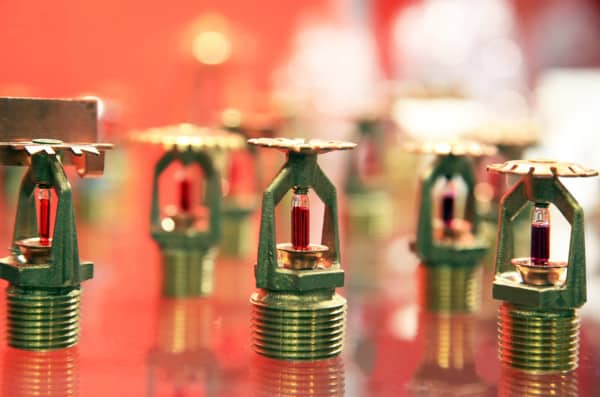
What is K-factor in a sprinkler?
A sprinkler K-factor’s simplest definition is ‘the size of the hole where the water comes out.’ Getting a little fancier, it’s the head’s discharge coefficient, “or in normal human terms […] just relates to the amount of water that is permitted through the sprinkler.”
The higher the number (say, 8.0K is fairly high), the bigger the hole and the more water; the lower the number (say, 3.0K), the less water. The most common K-factor (in light hazard occupancies, anyway) is 5.6K, and all the K-factor numbers were originally based on “multiples of” this benchmark. As Fire Protection Engineer Joe Meyer explains:
“A K2.8 sprinkler, for example, is 50% discharge of a K5.6 sprinkler, while a K11.2 sprinkler is 200% of the discharge of a K5.6.”
Pretty simple so far. But fire sprinkler system design is complex, and K-factor has a crucial relationship with the flow and pressure required for sprinklers in a system’s design area (more on that below). The formula for determining K-factor illustrates this relationship:
K = Q/ √P
Where: K = K-factor, Q = flow (gallons per minute, GPM), and P = pressure (pounds per square inch, PSI).
To understand why all this is vital, let’s briefly review system design and hydraulic demand.
The basics of fire sprinkler system design and calculating hydraulic demand
Broadly, designers determine how much water the system needs (pressure and flow at whatever K) like so:
1. They identify the “design area”—the most challenging portion of the system to protect. This area is based on its hydraulic demand, which increases with the location’s remoteness from the water source and occupancy hazard (fuel load and other protection challenges).
For example, a room on the top floor of a building furthest away from the sprinkler riser (the water source) needs more pressure to maintain flow while combating distance, friction, and gravity. And a structure with different occupancy hazard levels in it will need more sprinkler coverage (and supporting flow and pressure) to handle the higher fuel load in a “hydraulically demanding” area.
2. Once a designer identifies the design area, they determine the minimum discharge density needed at a minimum area size that must be protected with adequate sprinkler coverage—all dependent on pressure, flow, and K-factor.
Overall, this discharge density in most systems and settings governed by NFPA 13 is based on the occupancy hazard. However, various factors like sprinkler response types, system types, and architectural features can alter the exact number. Nevertheless, this graph illustrates the essential requirements:
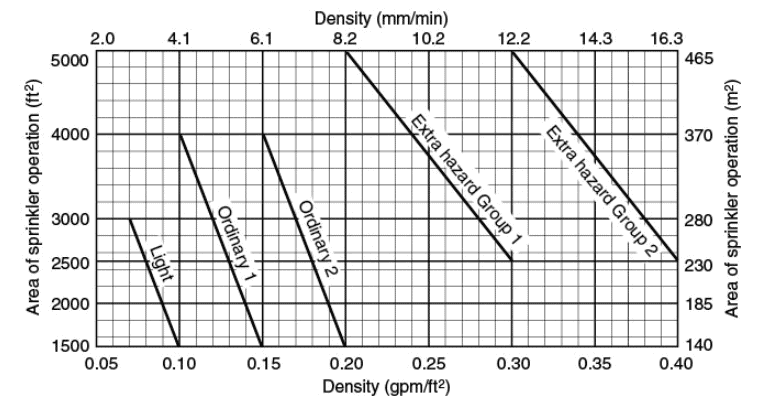
Otherwise, here’s what the various installation standards call for in residential settings:
- NFPA 13 systems require a design area with a minimum of four sprinklers, each achieving a minimum design discharge density of 0.1 gpm/ft2 or the manufacturer’s requirements, whichever is greater.
- NFPA 13R systems require a design area with up to four sprinklers, each hitting a minimum discharge density of 0.05 gpm/ft2.
- NFPA 13D systems require a design area with up to two sprinklers, each hitting a minimum discharge density of 0.05 gpm/ft2.
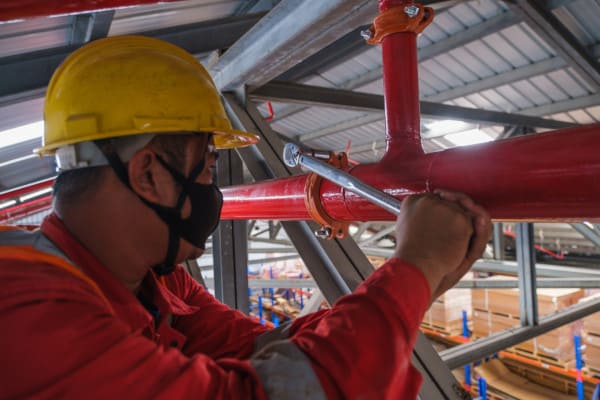
3. Once the designer knows the required discharge density, they calculate the flow (GPM) needed, which leads to figuring out the required pressure (PSI) at a given K-factor (K). Switching up the K-factor formula mentioned above shows this concept:
Q (flow)=K(K-factor) √P (Pressure)
There is much more to hydraulic design, such as accounting for gravity and friction based on the pipe material, etc. You can read a more detailed review of fire sprinkler hydraulic design in our previous blog.
But the basic takeaway is this:
The K-factor is an integral aspect of ensuring fire sprinklers deliver enough water in a large enough density at a given pressure and flow.
A good way to illustrate this idea is by looking at different coverage areas at various pressures and flows for a sprinkler with the same K-factor:

So, the system design has some leeway with K-factors (and pressure and flow).
For example, a design area that doesn’t have enough flow and pressure to achieve a specific minimum discharge density with 5.6K sprinklers might be able to do it with 8.0k sprinklers that naturally discharge more water—bigger holes! Or the designer could up the pressure and flow to the 5.6K sprinklers with the aid of a fire pump.
But qualified designers determine all this specifically and upfront. So, you generally must replace an existing fire sprinkler with another sprinkler with the same K-factor—and install new ones according to the system’s precise design.
However, finding an exact K-factor match may be impossible in some scenarios, like replacing old sprinklers with outdated specs.
In that case, you may be able to use a sprinkler with a slightly different K-factor that’s still up to the job—but only with the help of a qualified fire protection professional. We explain this in more detail below.
How to ID the sprinkler K-factor and choose the right fire sprinkler
Helpfully, the K-factor is usually engraved on a fire sprinkler’s deflector:
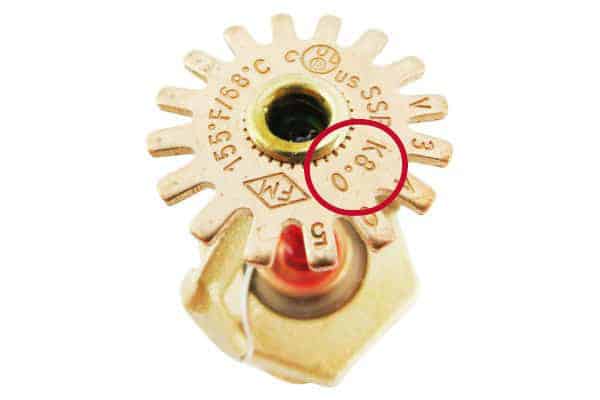
But an even more useful way to know the K-factor and other things is by identifying the sprinkler identification number (SIN), which is also printed on the deflectors of all sprinklers manufactured after 2000. The SIN is a four- to seven-digit alphanumeric string of characters that starts with one or two letters indicating the manufacturer. (You can spot Victaulic’s “V3405” on the edges of the deflector in the image above.)
The SIN is more useful than just knowing the K-factor because, in addition to identifying that number, it also reveals every crucial sprinkler characteristic except activation temperature and finish.
So, if you need a replacement sprinkler, start with the SIN—it will reveal the exact K-factor and other vital features. From there, you only need to choose the finish and temperature (and maybe any relevant accessories such as cover plates, escutcheons, head guards, and wrenches).
What if an exact replacement sprinkler model or precise replacement K-factor isn’t an option?
As mentioned earlier, sometimes a sprinkler is old or discontinued, has an odd K-factor, or you can’t ID that number—and find an exact replacement.
Our previous blog explains how to replace older residential fire sprinklers, examples of which can have ‘wonky,’ outdated K-factors. The various NFPA installation standards basically say you can use a different sprinkler (that matches other key characteristics) as long as the K-factor is within ± 5 percent:
From the 2022 editions of NFPA 13D, NFPA 13R, and NFPA 13
12.3.2.1* (NFPA 13D)/5.1.1.2* (NFPA 13R)/19.3.1.4.1 (NFPA 13)
Where replacing residential sprinklers manufactured prior to 2003 that are no longer available from the manufacturer and are installed using a design density less than 0.05 gpm/ft2 (2.04 mm/min[2.0 in NFPA 13]), a residential sprinkler with an equivalent K-factor (± 5 percent) shall be permitted to be used provided the currently listed coverage area for the replacement sprinkler is not exceeded.
But no explicit rule like this exists for non-residential sprinklers in NFPA 13—everything goes back to achieving various specific discharge densities according to the hazard and design area. And even some odd residential models might not have a replacement that meets the explicit ± 5 percent and other criteria.
In those cases—or ones where you can’t even ID the K-factor of an old sprinkler, our guidance remains consistent: “A qualified fire protection professional will have to do a more thorough examination of the system and try to find […] fire sprinkler heads that provide sufficient protection.”
This may be as simple as finding a suitable alternative sprinkler. The pro must assess the water supply, discharge density, design area, and any changes in the building and system to determine if a different ‘K’ is ok. But the effort could involve more extensive modifications, ranging from re-spacing the area with brand-new sprinklers to increasing pressure and flow with a fire pump.
Unfortunately, in the latter scenarios, those adaptations won’t necessarily be inexpensive or convenient.

Try to match the sprinkler K-factor and SIN first!
Again, the best option is to replace a sprinkler with the exact same model and install new ones with the precise specs (including K-factor) called for by the system design. And the easy way to do that is by selecting the appropriate SIN with the preferred finish and necessary activation temperature.
QRFS simplifies doing this while accessing our inventory with our Quick Finder.
In cases where you can’t rely on the SIN and need to use a different model, try to match the K-factor, temperature, response type, orientation, size/threads, listings, and other crucial characteristics.
And if no otherwise exact K-factor match exists, you’ll need a fire protection professional to assess your situation.
QRFS’s fire sprinkler product pages list all these relevant characteristics and link to manufacturers’ data sheets with even more detail. You can easily search our inventory by K-factor, SIN, and other attributes using the filters on the left-hand side of product pages or the search bar at the top of every page.
Nevertheless, the Quick Finder is the fastest route if you know the SIN!
If you have any questions, contact us at 888-361-6662 or support@qrfs.com.
This blog was originally posted at blog.qrfs.com. If this article helped you, check us out at Facebook.com/QuickResponseFireSupply or on Twitter @QuickResponseFS.


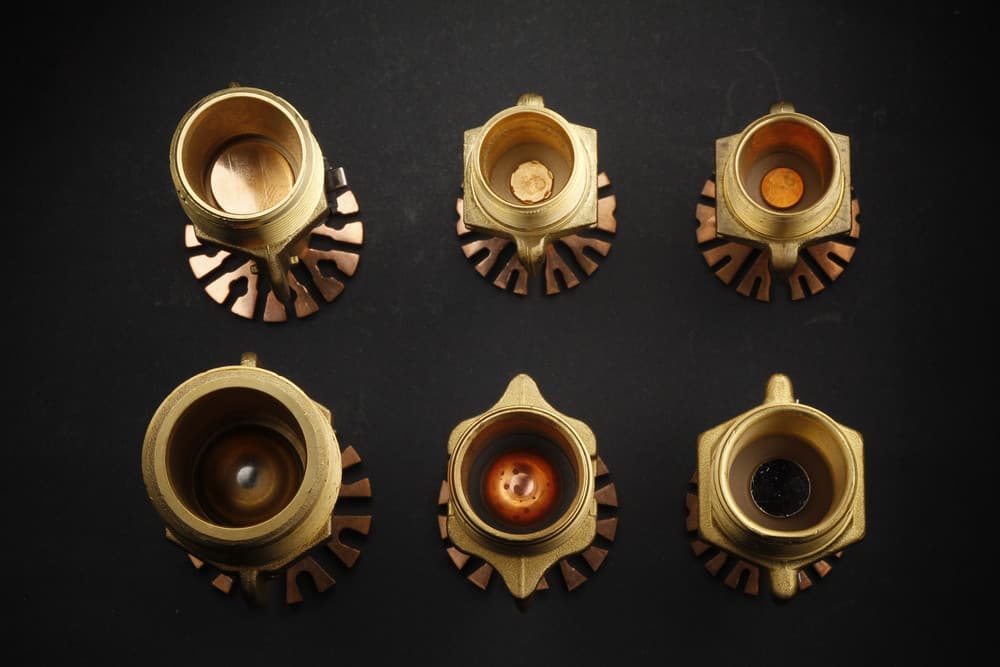
Very Informative.